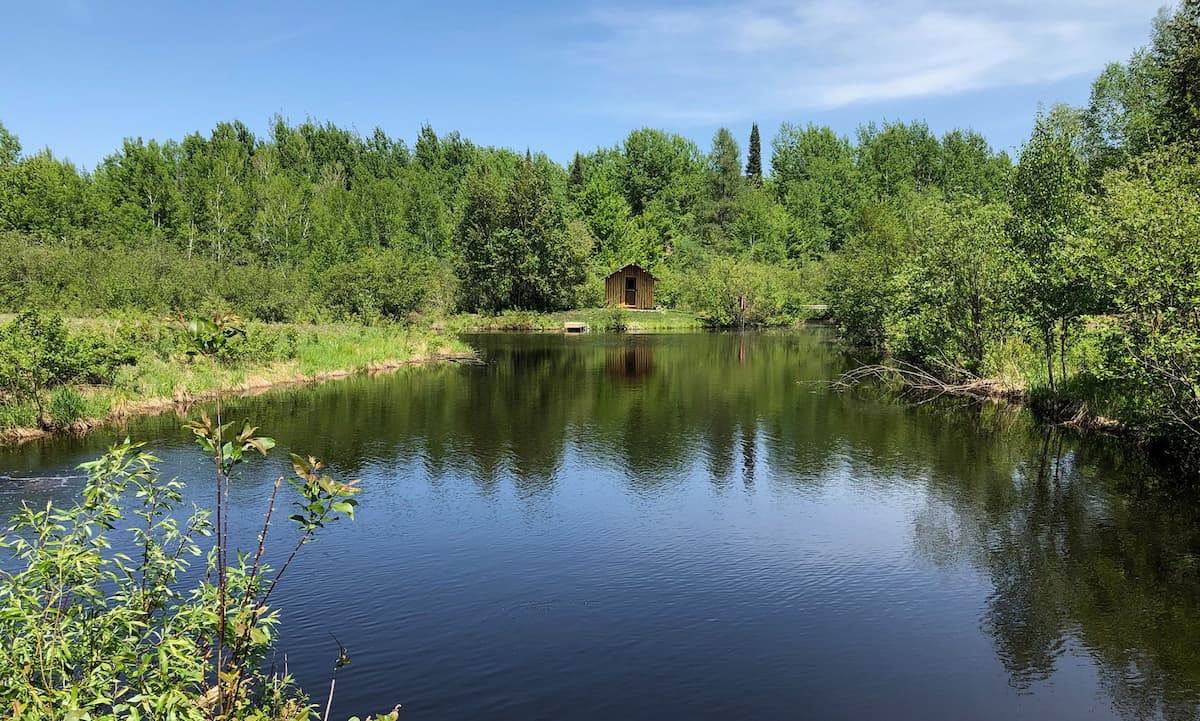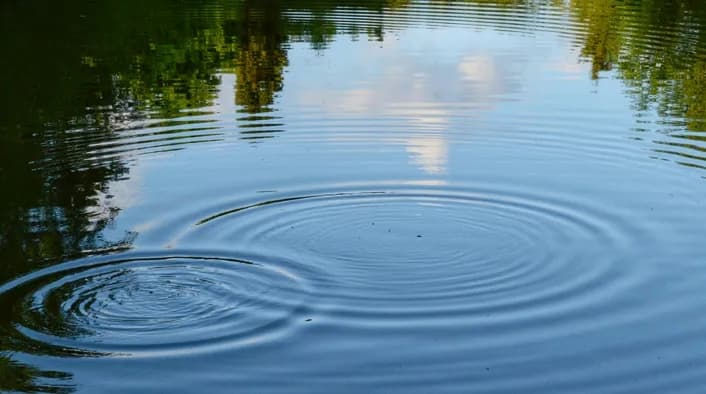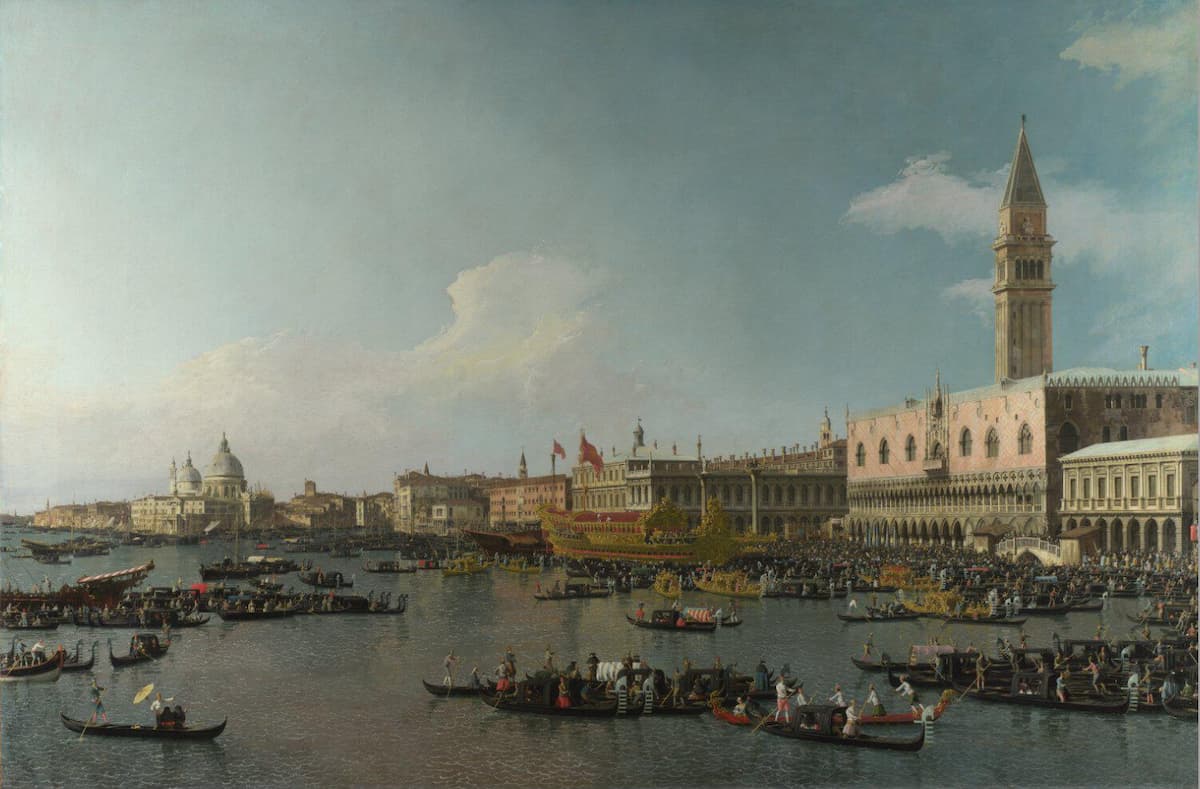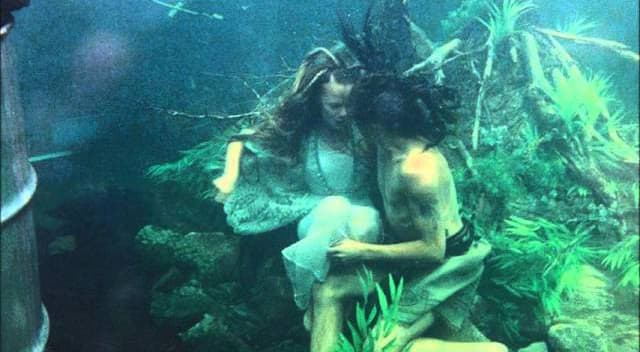Water, in its warm form, is the summer symbol (water in its cold form, i.e., ice and snow, is another matter).
We start on the water’s edge as it laps around our feet, cooling us and inviting us deeper. In his piano suite, On the Water’s Edge, Japanese composer Keiko Fujie puts us in all kinds of water situations – finding a shell on the shore, boating in the afternoon, floating in a swimming pool at midnight, at a pond with a heron, and, finally, listening to the lullaby of the waves.

At the Water’s Edge
Keiko Fujiie: Suite: On the Waters’ Edge, Op. 70 – XII. Lullaby of the Waves (Gerhard Oppitz, piano)
Korean composer Younghi Pagh-Paan is also on the water’s edge but throws a stone. The resulting pa-mun, wave reflections on the water, form circles that spread and create other pa-mun. After the disturbance, the lake returns to its state of rest.

Water ripples
Younghi Pagh-Paan: Pa-mun (Ripples on Water) (Klara Min, piano)
Béla Bartók puts us out on the waves, boating, in this small work from his Mikrokosmos series. The pianist imitates the gently undulating motion of the water.
Béla Bartók: Mikrokosmos, BB 105, Vol. 5 – No. 125. Boating (Jenő Jandó, piano)
Written as a companion piece to his earlier work The Dream (op. 75, no. 1), Water Droplets in Venice (op. 75, no. 2) is inspired by Canaletto’s Venetian paintings.

Canaletto: The Basin of San Marco on Ascension Day, ca 1740 (London: The National Gallery)
Nimrod Borenstein: Water Droplets in Venice, Op. 75, No. 2 (Tra Nguyen, piano)
Three small pieces from Scandinavia give us dancing frogs, the pluck of water drops, and a work for flute that finds its inspiration in water.

Frogs (Image by ClutchBearsCave)
Olli Mustonen: Frogs Dancing on Water Lilies (Martti Rousi, cello; Tapiola Sinfonietta; Olli Mustonen, piano)
Jean Sibelius: Vattendropper (Water Drops), JS 216 (Yoshiko Arai, violin; Seppo Kimanen, cello)
Usko Meriläinen: Huilu, veden peili (Flute, Mirror of Water) (Mikael Helasvuo, flute; Ilmo Ranta, piano)
The Biotop Water Garden in Japan is the inspiration for Oliver Davis’ work The Water Garden. It’s an earthwork landscape which mixes the boundary between architecture, landscape architecture, art, and environmentalism. It’s both natural and highly artificial. Although the trees look natural, each has been moved and placed as necessary. It’s invasive but, at the same time, sculpts space to look natural. This is a work that uses space, not materials, as its architectural basis. The composer says, ‘I used a combination of piano and strings with occasional harp glissandi to give the piece a slightly oriental feel’.

The Biotop Water Garden (Japan)
Oliver Davis: The Water Garden (Beth and Flo, piano four-hands; Royal Philharmonic Orchestra, string section; Oliver Davis, harp and celesta; Paul Bateman, cond.)
There are larger stories of water beings, often with their own selfish agendas. Undine, a water nymph, is one of the mythological nereids who attend the sea god Poseidon. In western mythology, Undine is doomed to fall in love with a faithless man and so die of her love. On the other side, Dvořák has his water goblin, who entices a young girl to join him under the waves as his wife. She becomes unhappy as the goblin wife and sings to her half-goblin child. Lonely for her home, she persuades the goblin to let her see her mother for one day. When she overstays her visit, the goblin kills the child and flings it against the cottage door. Tragic and gruesome, it is an object lesson in knowing your future partner!

The Water Goblin
Antonin Dvořák: The Water Goblin, Op. 107, B. 195 (Polish National Radio Symphony Orchestra; Antoni Wit, cond.)
For more of the best in classical music, sign up for our E-Newsletter

